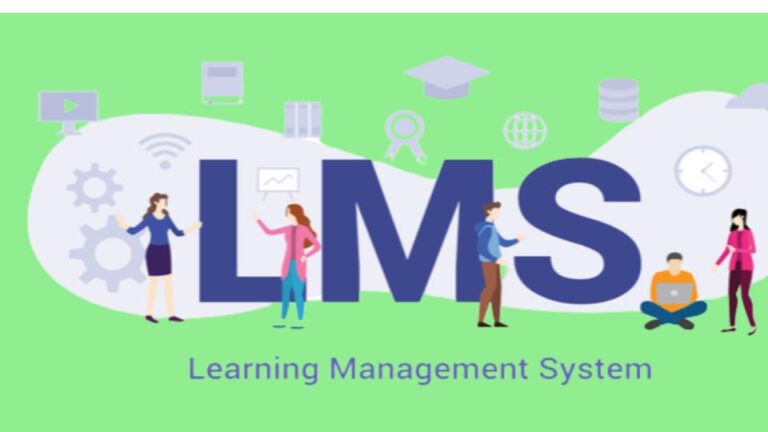Blockchain Technology And eLearning: It’s Improvement Of E-learning

The blockchain technology and eLearning are forming a formidable bound today. It is being used is for online learning.
Today, there are many different groups involved in the education industry, such as schools and other companies that provide training.
Blockchain technology helps to keep this new way of education safe and protected.
To make education better online, there are a few important things for online teachers, schools that offer online classes, and people working on blockchain technology.
In this article, we will learn how blockchain technology can make online learning better.
Blockchain Technology: What Is It?
Blockchain is a technology that stores information in a secure way, making it virtually impossible to alter, steal or inspect the information within the system.
The blockchain technology is a digital record of transactions that is copied and spread out to all the computers in the network.
Read: Generative AI Tools and Their Powers In eLearning Design
Blockchain Technology Value To eLearning
The use of blockchain technology greatly changed the way people learn online. Here we are explaining why blockchain is useful in online learning.
1. Storage And Tracking of Data
The technology called blockchain saves information in groups of blocks. The blocks are connected to each other in a line that goes in the same direction.
If data is saved, it cannot be changed or rewritten. But, you have the ability to alter the block that is saved.
For instance, X became Y at a specific time. Blockchain technology is a way to keep track of data changes without destroying any information.
2. Digital Badges
When we discuss how blockchain technology makes online learning better, one way is by creating safe digital badges and certificates that can easily be checked and shown on digital platforms. They include:
Many organizations, such as Rosetta Stone, Google, Udacity, Kaplan University, and Hootsuite, have partnered with Accredible since it was founded in 2013 for their certification programs.
Accredible offers an easy way to verify credentials digitally using blockchain technology. It can be integrated with many different digital tools and systems.
Another platform called Edgecoin also provides smart certifications and digital credentials using blockchain technology.
Edgecoin Pay provides a safe online platform for schools to create, manage, and give out digital certificates and records using blockchain technology. This includes documents such as academic transcripts, diplomas, report cards, and achievement certificates.
3. Educational Cryptocurrency Rewards
What happens if you get bitcoins as a gift after finishing your studies. It would be unexpected, as bitcoin is not something usually given as a reward. This can encourage students and learners to complete the curriculum faster.
4. eLearning Platforms Decentralised
Blockchain is a technology that allows for educational platforms to be spread out or decentralized. These platforms are managed and operated by agreement among the people involved, instead of being controlled by one person or group.
Blockchain technology allows for a direct learning experience with others. It also promotes the use of the same standards in schools and universities.
We can think about the idea of using a platform that is not owned by just one teacher.
Blockchain And eLearning: Are They A Strong Combination?
Yep, definitely, absolutely. When blockchain technology and elearning come together, they make a strong team. Blockchain technology in eLearning makes institutions and education better. It makes people use smart techniques more often.
Difficulties Facing Blockchain Technology and eLearning
To make blockchain technology in the education sector grow, trainers and institutions face several obstacles.
Almost half of the people taking part in a survey conducted by Gartner, who were studying at a higher education level, said that they were not interested in using blockchain technology.
1. Security
Security is a big worry everywhere. Sensitive information is stored in blocks on the blockchain. Organizations need to consider what information they keep and the reasons behind it.
Educational institutions must have strong protection for their data. The security can be increased by using permission blockchain and encrypting the data on it.
Schools and institutions should enhance their security using blockchain technology.
2. Rate of Adaptation
Currently, not many people are using blockchain-based certificates, and many students have faced difficulties because of this.
Credentials are only useful if schools or companies agree that they are real and trustworthy. There are many schools that currently use and recognize blockchain credentials, but there are also many others that do not.
Many websites, such as Upwork and ZipRecruiter, encourage the use of credentials based on blockchain technology.
3. Scalability
Scalability is a problem when using blockchain technology for eLearning. Schools and colleges have a lot of information about their students and former students.
This causes issues with the ability of blockchain technology to expand and handle larger amounts of information.
When there is more data, there are more blocks. The speed of transactions slows down when there are a lot of blocks because each transaction needs verification from peers.
4. Cost
When people start using the new technology, it will likely be expensive. The cost depends on how powerful the computer is and what changes need to be made to the current infrastructure.
This cost can become high. Many colleges and institutions do not have the knowledge and skills needed to handle student information on a blockchain platform.
Conclusion
Blockchain technology in eLearning is a new and very useful advancement. Blockchain can change the way verification systems typically work. It will be very safe and protected. There are many companies that make learning platforms using blockchain technology.







